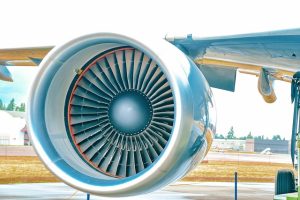
The wings are one of the most important components of airplanes. Consisting of flat, semiflexible structures that extend out from the fuselage, they are responsible for generating lift. Lift, of course, is the upward pulling force that counters the downward pulling force of gravity. Without wings, airplanes won’t be able to take off or maintain altitude. While there are many different styles of wings, however, most can be categorized as low, mid or high.
What Are Low Wings?
Low wings are characterized by a low mounting location. They are found near the bottom of the fuselage. Like all wings, they extend out from the fuselage. Low wings simply extend out from the bottom part of the fuselage.
What Are Mid Wings?
Mid wings are characterized by a midpoint mounting location. They are found roughly in the center of an airplane’s fuselage. They are available in many of the same sizes and shapes as low wings. Mid wings, though, are located slightly higher on the fuselage than low wings.
What Are High Wings?
There are also high wings. As you may have guessed, high wings are characterized by a high mounting location. They extend out from a relatively high point on the fuselage — almost at the top of the fuselage.
Differences Between Low, Mid and High Wings
While they are all designed to generate lift, low, mid and high wings aren’t the same. The main difference is their mounting location. Low wings are mounted near the bottom of the fuselage; mid wings are mounted near the center or midpoint of the fuselage; and high wings are mounted high on the fuselage.
Low wings provide better visibility — particularly forward and upward visibility — than mid and high wings. They don’t obstruct pilots’ view as much as other mounting locations. With low wings, pilots can easily see forward and downward.
Low wings are also more aerodynamic than mid and high wings. Whether low, mid or high, all wings feature an aerodynamic shape that allows air to flow over and under them. Low wings, however, promote a more streamlined flow of air around the fuselage, which translates into less drag. And with less drag, airplanes with low wings are more fuel efficient. This is why so many commercial airliners have low wings.
Mid wings, on the other hand, offer superior maneuverability. They have neutral roll stability while allowing for high maneuverability. These properties make mid wings a popular choice for sport aircraft, aerobatic planes and military jets.
High wings provider better downward visibility. Pilots can easily see the ground and space below the airplane with this mounting location. As a result, high wings are commonly found on airplanes used for aerial photography.



